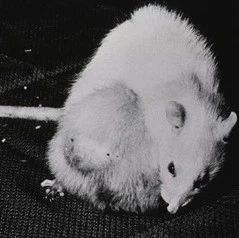癌症研究领域的大牛Robert A.Weinberg身上笼罩着一道道绚丽的光环:美国科学院院士,世界著名的Whitehead研究所创始人之一,他曾发现了第一个人类癌基因Ras和第一个抑癌基因Rb,他的一系列杰出研究工作已经成为肿瘤研究领域乃至整个医学生物学领域的重要里程碑。
2012诺奖热门候选人Weinberg RA谈肿瘤干细胞的新靶点
9月,其研究组发表了题为“Cancer-stimulated mesenchymal stem cells create a carcinoma stem-cell niche via Prostaglandin E2 signaling”的研究论文,指出间充质干细胞MSCs及其衍生的细胞类型能构建一个癌症干细胞微环境,帮助肿瘤通过释放PGE2和细胞因子,促进肿瘤发生发展。
这位学者在Cell杂志上发表的两篇癌症研究综述:Hallmarks of Cancer: The Next Generation是迄今为止引用最多的癌症综述之一,他的一系列杰出研究工作已经成为肿瘤研究领域乃至整个医学生物学领域的重要里程碑。因此近年来对于他获得诺贝尔奖的呼声也逐年增高。
肿瘤相关基质中的间充质细胞对于癌细胞行为具有关键的决定作用,这是一类贴壁生长、形态类似于成纤维细胞的干细胞,间充质干细胞MSCs在癌症发生过程中会被召集到肿瘤间质区域,而且一旦出现,就能影响癌细胞的表型。如果能深入了解癌细胞与间充质干细胞MSCs之间的相互作用,那么就能进一步探索癌症的发生发展过程。
在这篇文章中,研究人员发现,癌细胞来源的白细胞介素-1(IL-1)能诱导MSCs介导的前列腺素E2(PGE2)分泌。由此产生的PGE2就以自分泌的方式,与旁分泌的IL-1信号合作,诱导间充质干细胞一组细胞因子的表达。之后PGE2和这些细胞因子,继续通过旁分泌的方式激活β-catenin信号通路的活性,并促进癌症干细胞的形成。
这些研究表明,间充质干细胞MSCs及其衍生的细胞类型能构建一个癌症干细胞微环境,帮助肿瘤通过释放PGE2和细胞因子,促进发生发展。
此前Weinberg教授发表的癌症综述长达29页,简述了最近10年肿瘤学中的热点和进展,包括细胞自噬、肿瘤干细胞、肿瘤微环境等等,并且将原有的肿瘤细胞六大特征扩增到了十个,这十个特征分别是: 自给自足生长信号(Self-Sufficiency in Growth Signals);抗生长信号的不敏感(Insensitivity to Antigrowth Signals);抵抗细胞死亡(Resisting Cell Death);潜力无限的复制能力(Limitless Replicative Potential);持续的血管生成(Sustained Angiogenesis);组织浸润和转移(Tissue Invasion and Metastasis);避免免疫摧毁(Avoiding Immune Destruction);促进肿瘤的炎症(Tumor Promotion Inflammation); 细胞能量异常(Deregulating Cellular Energetics);基因组不稳定和突变(Genome Instability and Mutation)。

 Cancer-Stimulated Mesenchymal Stem Cells Create a Carcinoma Stem Cell Niche via Prostaglandin E2 Signaling.
Cancer-Stimulated Mesenchymal Stem Cells Create a Carcinoma Stem Cell Niche via Prostaglandin E2 Signaling.
Li HJ, Reinhardt F, Herschman HR, Weinberg RA.
Mesenchymal cells of the tumor-associated stroma are critical determinants of carcinoma cell behavior. We focus here on interactions of carcinoma cells with mesenchymal stem cells (MSC), which are recruited to the tumor stroma and, once present, are able to influence the phenotype of the carcinoma cells. We find that carcinoma cell-derived interleukin-1 (IL-1) induces prostaglandin E(2) (PGE(2)) secretion by MSCs. The resulting PGE(2) operates in an autocrine manner, cooperating with ongoing paracrine IL-1 signaling, to induce expression of a group of cytokines by the MSCs. The PGE(2) and cytokines then proceed to act in a paracrine fashion on the carcinoma cells to induce activation of β-catenin signaling and formation of cancer stem cells. These observations indicate that MSCs and derived cell types create a cancer stem cell niche to enable tumor progression via release of PGE(2) and cytokines.






